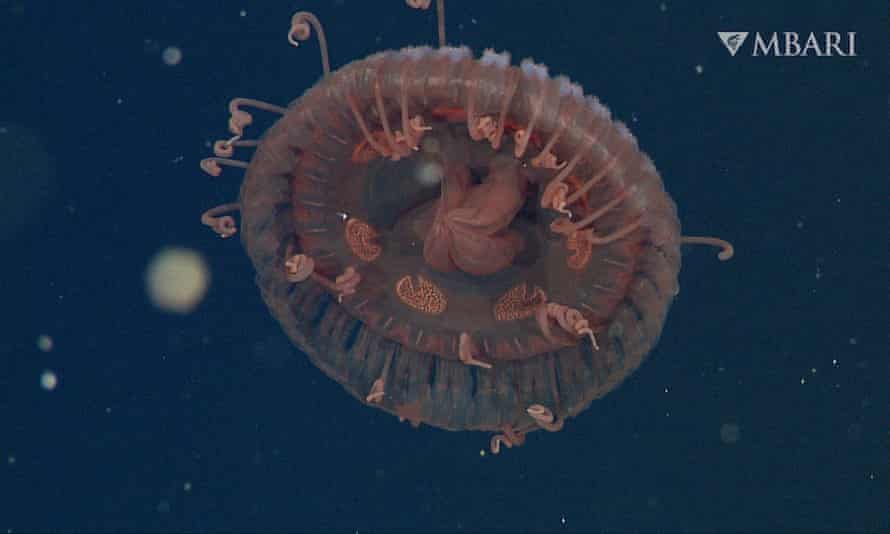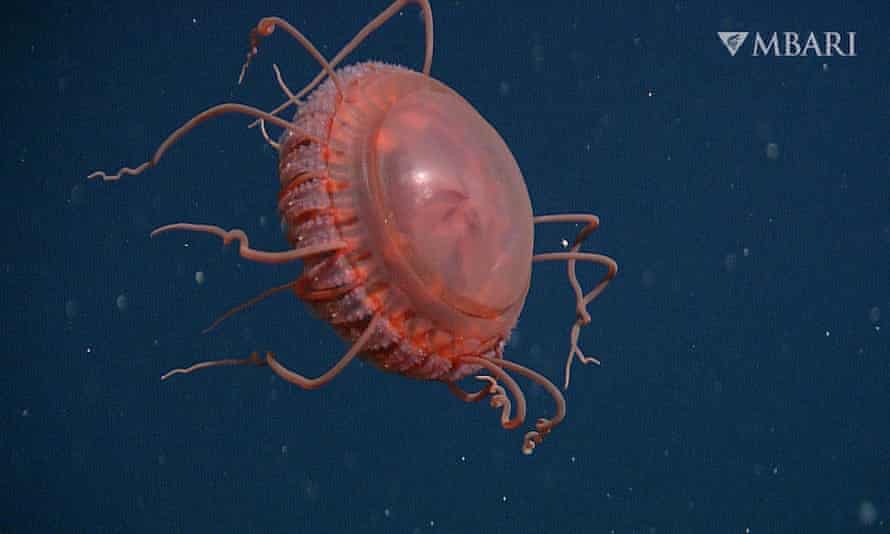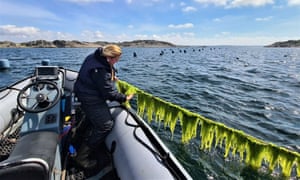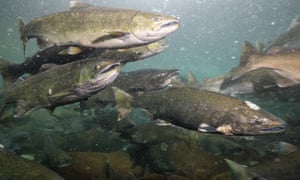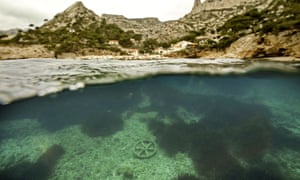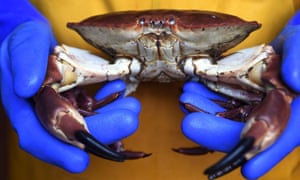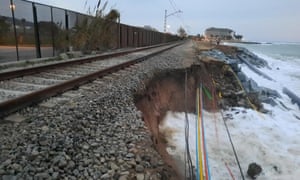The Atolla reynoldsi is one of three formally identified new specimens of Atolla jellyfish floating in the depths of Monterey Bay.
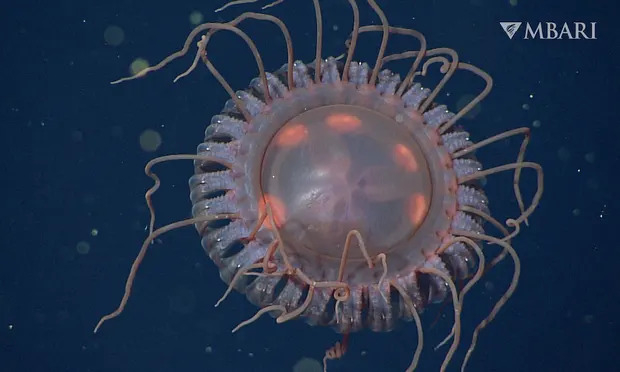 A new species of deep-sea crown jelly, Atolla reynoldsi, discovered by MBARI researchers. Photograph: © 2014 MBARI
A new species of deep-sea crown jelly, Atolla reynoldsi, discovered by MBARI researchers. Photograph: © 2014 MBARI
The creature, a type of Atolla jellyfish, was discovered by scientists at the Monterey Bay Aquarium Research Institute (MBARI). It lives in the so-called midnight zone of the ocean – between one and four kilometers deep – a mysterious region where light only comes from animals that produce it themselves and the pressure reaches 5,580 pounds a square inch.
Years ago, researchers there noticed something strange when looking at video and samples from remotely operated vehicles. While Atolla, a red-colored jelly with one trailing tentacle, is a common inhabitant of the midnight zone of Monterey Bay, there were some jellies that looked different. Instead of one tentacle, this jelly had none.
“We realized that we had found an unusual jelly around 2014 and went back through our records to find a few additional observations,” says George Matsumoto, MBARI senior education and research specialist. “We also kept an eye out for additional sightings so that we could obtain specimens to examine and deposit at the California Academy of Sciences.”
–
The researchers collected numerous specimens of three different Atolla-like jellies that lacked the tentacle. They have now created enough details to formally identify one of them, naming it the Atolla reynoldsi in a research paper published last month. The newly described jelly is larger than other Atollas – the largest specimen MBARI researchers collected was 13 centimeters in diameter.
It’s also not as common as other types of Atolla – researchers have only observed 10 specimens between April 2006 and June 2021. The species is only known from Monterey Bay and lives at depths of 1,013 to 3,189 meters.
Matsumoto and his coauthors believe two more previously unknown species of Atolla also live in the depths of Monterey Bay, California – alongside the ten types of Atolla that are already known around the world. They hope to use DNA to eventually describe these new additions to Atolla’s family tree.
“We have seen even fewer of these than our recent new species so we need to wait to find some more samples before we can definitely say that they are also new species,” he says. “We hope that by publishing images and videos that our colleagues around the world will keep their eyes open for these undescribed types.”
–
The existence of this jelly raises questions about species that live in the global ocean and haven’t yet been described. Millions of species live in the deep-sea – and many are still unknown. NOAA [The National Oceanic and Atmospheric Administration] estimates that humans have only described 10% of what can be found in the ocean.
It also takes time to publish the findings. According to a study from 2012, the average time between the discovery of a new species and its “description” – eg the process of formally describing a newly identified species to the scientific community – is 21 years. MBARI researchers have documented more than 225 new species from explorations in Monterey Bay over the past 34 years – but the deep zone is one of the least explored places.
The finding also comes as marine environments such as the Monterey Bay face increasing pressures from climate change and pollution. A 2019 study of the bay found high concentrations of microplastics even at great depths.
“We, collectively the human population, need to spend more time and funds exploring and learning about the ocean – the largest habitat on Earth,” says Matsumoto. “It is difficult to protect or preserve an ecosystem when we don’t know who lives in that system or how they interact with each other – and humans are already having an impact on the ocean.”
–
–










